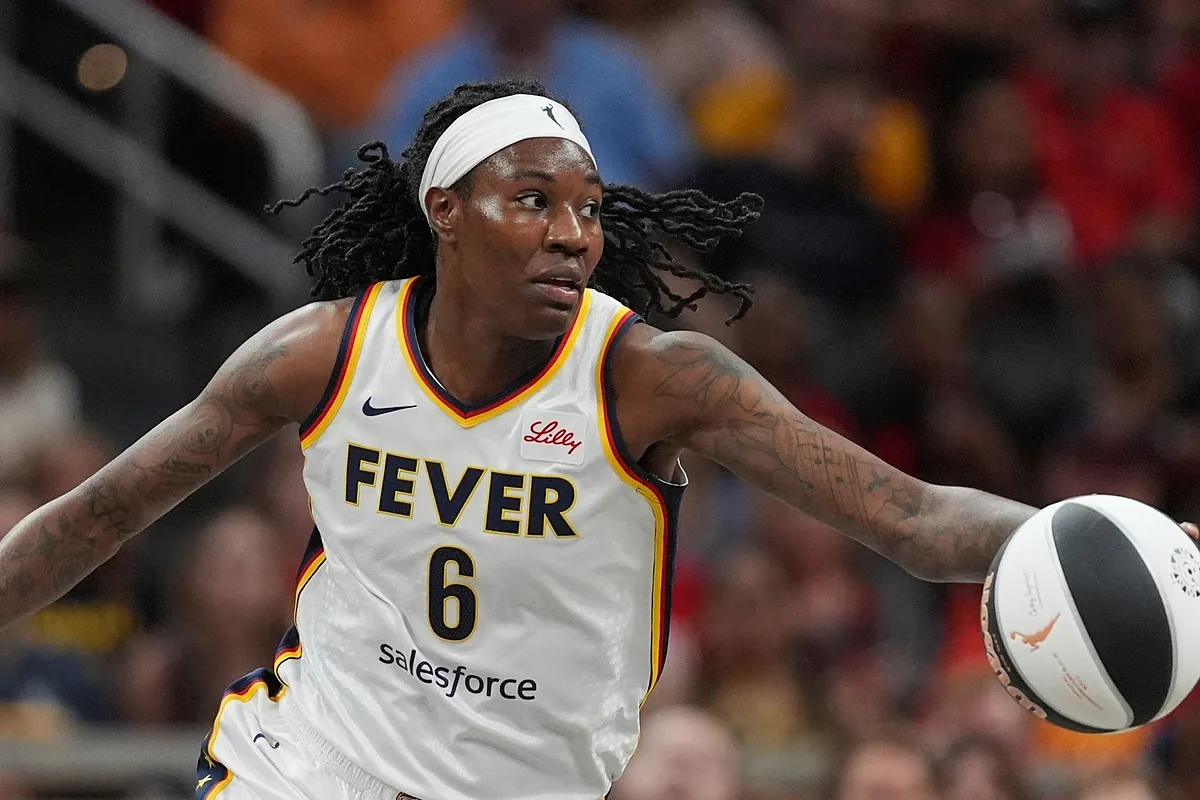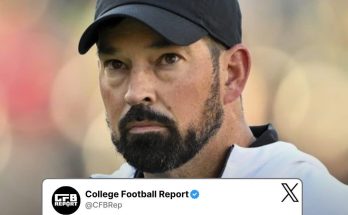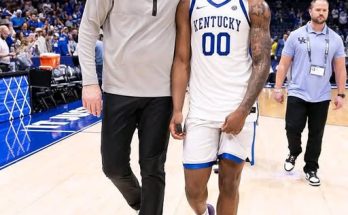The WNBA, an arena that thrives on skill, teamwork, and the shared goal of elevating women’s basketball, has recently found itself in the eye of a social media storm. The reason? A split-second moment involving veteran forward Natasha Howard and rookie sensation Caitlin Clark. During a recent Indiana Fever game, Howard’s decision not to pass the ball to Clark on a pivotal offensive possession has ignited intense fan backlash, revealing much more than just a disagreement over basketball strategy. The moment has become a flashpoint for debates about sports culture, team dynamics, race, generational divides, and the ever-growing celebrity status of Clark herself.
The play in question was fairly ordinary in terms of basketball mechanics. As the Fever pushed up the court during a crucial stretch of the game, Clark flared to the wing and appeared open for a three-point opportunity. Instead, Howard held the ball, surveyed the floor, and opted to drive it herself, ultimately turning the ball over. Cameras captured the sequence clearly, and as fans dissected the play online, the criticism began flooding in. Hashtags trended, comment sections exploded, and Howard found herself at the center of a vitriolic digital debate. What should have been a simple on-court decision morphed into a narrative soaked in controversy.
Caitlin Clark has arrived in the WNBA not just as a rookie, but as a phenomenon. Her collegiate exploits at Iowa rewrote the record books and attracted millions of viewers to women’s basketball. She brought something the league has long sought: a transcendent star with crossover appeal. It’s no surprise then that many of Clark’s fans, some of whom are new to the WNBA, are hyper-focused on her development and success. To them, every moment that doesn’t seem to center Clark feels like a misstep or, worse, an intentional slight. That lens turns a missed pass into perceived sabotage.
But such a narrative oversimplifies the nuanced reality of professional sports. Natasha Howard is a three-time WNBA champion and former Defensive Player of the Year. Her resume commands respect. To reduce her actions to petty jealousy or deliberate exclusion is unfair and patronizing. Howard, like any elite athlete, makes split-second decisions based on feel, instinct, and experience. Perhaps she saw an opening for herself. Perhaps she was trying to be aggressive and spark a run. The problem isn’t so much the decision itself, but the disproportionate weight fans assigned to it because of Clark’s involvement.
This situation also reveals a tension that has long simmered beneath the surface in the WNBA. Clark represents a new era: she’s young, white, media-savvy, and heavily marketed. Players like Howard, who have spent years grinding for respect and recognition, often without the same media shine, may understandably feel some frustration—not necessarily at Clark herself, but at the system that seems to elevate one narrative while ignoring countless others. It’s not about envy; it’s about equity. And when fans respond to every perceived slight against Clark with fury, it adds fuel to the already smoldering fire of resentment.
Moreover, the WNBA is not immune to the broader racial dynamics that shape American culture. There is an uncomfortable but undeniable racial undertone to some of the fan outrage. Clark, who is white, enjoys a level of commercial embrace that many Black players never have, despite comparable or even superior achievements. The backlash against Howard, who is Black, feels familiar in its intensity and tone. It’s a pattern seen across sports and entertainment—where Black professionals are scrutinized more harshly, their mistakes interpreted through a lens of malice rather than human error.
To be clear, Caitlin Clark herself has not fed into this narrative. By all accounts, she has handled her early stardom with grace, consistently deflecting praise to her teammates and showing deference to veterans. She has emphasized repeatedly that she’s learning, adjusting, and trying to earn her place in the league. The problem lies more with how the discourse around her is being shaped externally. When fans frame Clark as a lone warrior being held back by jealous teammates, they inadvertently pit her against the very league she’s trying to uplift.
The Fever’s coaching staff and players have addressed the incident with professionalism, noting that basketball is a fluid game and not every pass—or lack thereof—deserves an inquisition. Head coach Christie Sides remarked that players are encouraged to trust their instincts, and that communication and trust are constantly evolving. Clark herself didn’t appear to express any visible frustration on the court. In fact, she praised her teammates in the postgame presser, noting that everyone is trying to make the right play and that chemistry takes time to build.
Still, that hasn’t stopped pundits and fans alike from turning this one moment into a referendum on the Fever’s internal dynamics. Some have speculated that there’s a rift between Clark and her teammates. Others insist that veteran players are threatened by her fame and are intentionally freezing her out. But these narratives often rely on speculation more than fact. Basketball is not a game of absolutes. Sometimes, a player just makes a mistake. Sometimes, the defense rotates quickly. Sometimes, it’s just a bad possession. To imbue every action with motive is to ignore the chaotic beauty of the game.
What this controversy really underscores is the challenge the WNBA faces in integrating new fans into its culture. The league is finally enjoying a long-overdue surge in popularity, driven in part by Clark’s arrival. But many of these new fans are unfamiliar with the league’s history, its stars, and the unique challenges it faces. They view the WNBA through an NBA-style celebrity lens, where the focus is on individual stardom rather than team cohesion. That’s not inherently bad, but it does create tension when team-first cultures clash with fan-driven expectations.
This moment with Howard and Clark can also be seen as a teachable one. For fans, it’s a reminder that respect must be extended to all players, not just the ones who dominate headlines. For the league, it’s a sign that it must manage the narratives surrounding its stars carefully. And for players, it’s a challenge to continue forging chemistry amid growing media scrutiny. The WNBA’s growth depends on finding balance—between old and new, between veterans and rookies, between collective legacy and individual brilliance.
The outcry over the missed pass is ultimately less about what happened on the court and more about what fans felt it represented. It became a proxy war for deeper anxieties and aspirations. Some saw it as proof that Clark is being disrespected. Others saw it as an unfair attack on a respected veteran. But perhaps the most grounded interpretation is that it was simply one play, in one game, of a long season in a demanding league. In sports, mistakes happen. Trust takes time. Chemistry is forged in the fire of repetition, not immediate perfection.
To vilify Howard for a single decision is to ignore her decade of excellence. To expect Clark to be the centerpiece of every possession is to ignore the team-first ethos of the game. Fans are right to be passionate—it’s what fuels the sport. But that passion must be tempered with perspective. One play doesn’t define a player, a team, or a league. It’s the full body of work that tells the story. And in the case of the WNBA, that story is still being written, chapter by chapter, play by play.
As the season unfolds, the Fever will continue to evolve. Clark will find her rhythm. Howard will continue to lead. And with time, the noise surrounding moments like this one will fade, replaced by a deeper appreciation for the grind of professional basketball. Until then, perhaps the best thing fans can do is cheer with grace, criticize with fairness, and remember that every player—rookie or veteran—deserves the benefit of the doubt, and the respect earned through years of dedication to the game.



